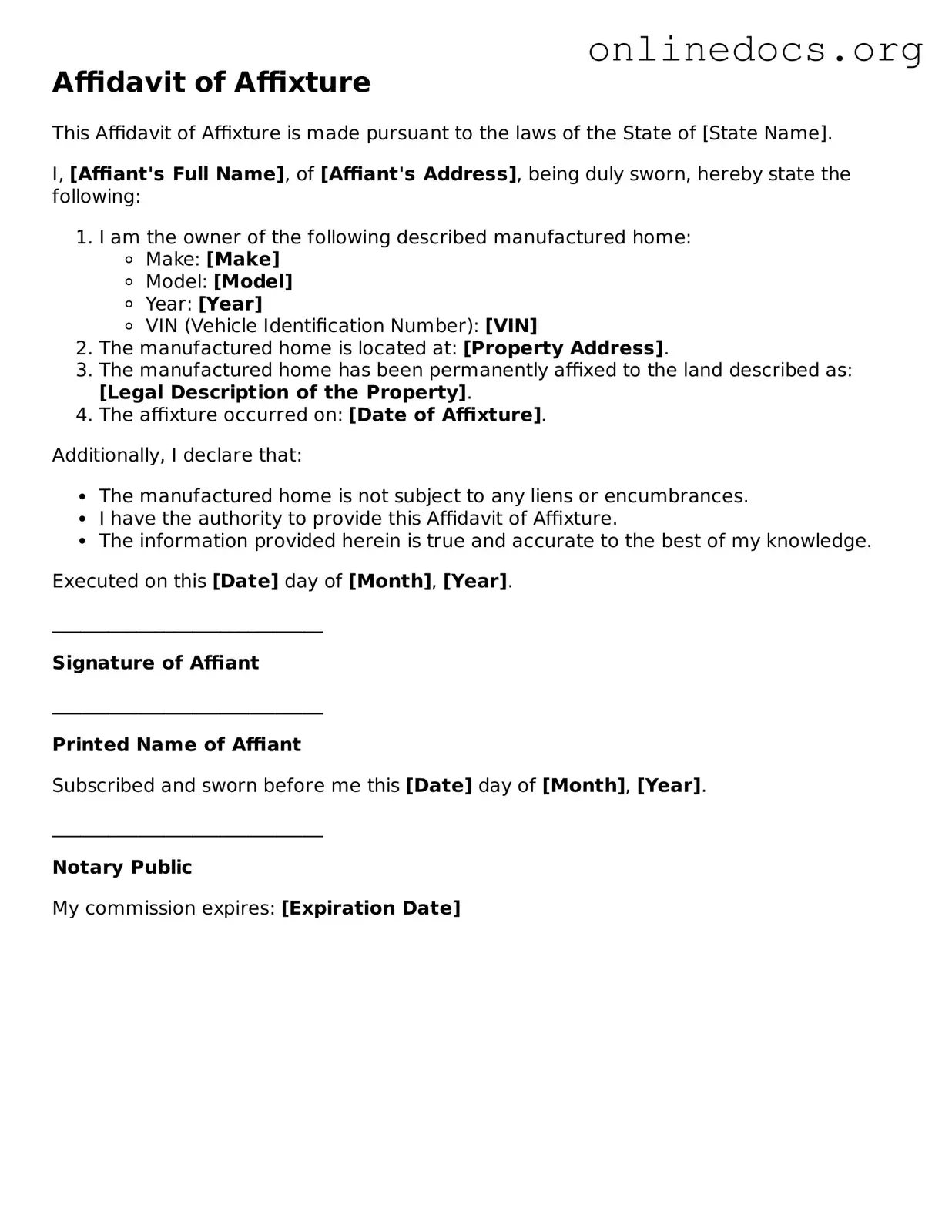Filling out the Affidavit of Affixture form can be straightforward, but many individuals encounter common pitfalls that can lead to complications. One significant mistake is providing inaccurate property information. This includes errors in the legal description of the property or incorrect addresses. Such inaccuracies can delay the processing of the affidavit and may require additional steps to correct.
Another frequent error involves the signatures. All required parties must sign the form. If one signature is missing, the document may be deemed incomplete. It is crucial to ensure that all individuals with an ownership interest in the property have signed the affidavit.
Not including the necessary supporting documents is also a common oversight. Typically, proof of ownership or other relevant documentation is required. Failing to attach these documents can result in rejection of the affidavit.
People often forget to check the date on the affidavit. The date must reflect when the affidavit was executed. An outdated date can raise questions about the validity of the document.
Inadequate notarization is another mistake that can occur. The affidavit must be notarized by a licensed notary public. If the notarization is missing or improperly completed, the affidavit may not be accepted by the relevant authorities.
Some individuals neglect to review the entire form before submission. This can lead to overlooked errors or omissions. A thorough review can help catch mistakes that may otherwise complicate the process.
Another issue arises when individuals do not understand the implications of the affidavit. It is essential to comprehend what signing the affidavit means for property ownership and any associated liabilities. Misunderstanding these implications can lead to unintended consequences.
People sometimes submit the affidavit to the wrong office or agency. Each jurisdiction may have specific requirements regarding where to file the affidavit. Ensuring that the form is submitted to the correct location can prevent delays.
Lastly, failing to keep copies of the submitted affidavit is a mistake that can create problems later. Keeping a copy for personal records is essential in case any issues arise in the future.
